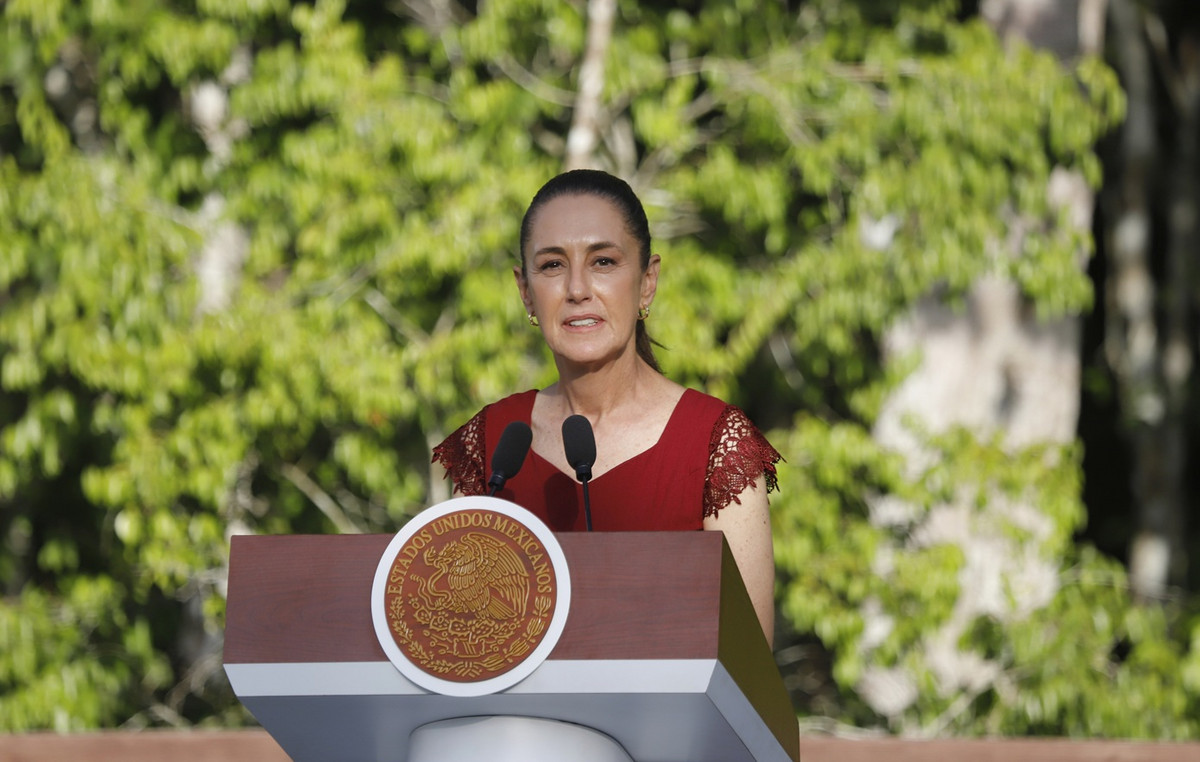In an effort to make the Income Tax (IR) declaration a little less dry and a little more intuitive, the Federal Revenue announced a series of news for the IR 2022in which taxpayers must inform their income data for 2021.
The declarations start this Monday (7), from 8 am, and the deadline ends on April 29. The five refund batches will take place between May 31 and September 30.
Delivery is mandatory for those who had taxable earnings above BRL 28,559.70 in 2021 or exempt and non-taxable income above BRL 40 thousand.
Among the new features, there is the possibility of having a good part of the form already pre-filled (including paying companies, amounts received and medical appointments), and also the option to start and finish the declaration on different platforms with greater ease (by cell phone and computer, for example).
There is also the possibility, for some people, of receiving the refund payment by PIX, and the inclusion of a new category just to declare crypto assets, such as bitcoin and NFTs.
“All the changes are aimed at facilitating the declaration”, says the national supervisor of the IR 2022, the tax auditor José Carlos da Fonseca. “With the facilities, we also expect that there will be fewer problems with fine mesh.”
O CNN Brasil Business spoke with Fonseca to explain how the new features will work.
Here are the main changes to this year’s reporting process:
single login
Starting this year, taxpayers will be able to access the income tax return system using the “gov.br” account, a single federal government login that allows citizens to access various public services over the internet without needing an account for each one. of them, such as INSS, Enem and documents such as CPF and work card.
The account exists in three levels of security: bronze (the simplest, without authentication), silver and gold. At the silver and gold levels, the user authenticates his data “online” with partner institutions, such as banks or the National Traffic Department (Denatran).
This authentication mechanism, explains Fonseca, raises the level of security and allows the Federal Revenue to handle more information about the citizen.
“With this authentication, I know that you are you, that whoever is on the other side can receive that information. Before, I didn’t have that, it could be anyone filling it out”, said the IR 2022 supervisor.
The gov.br account can be created by anyone on the government page.
For income tax, it can now be used in the three channels available for the declaration: the e-CAC system, the “Meu Tax de Renda” app on mobile or the Receira website.
The old access system, with its own login, password and access key, is still available, but without the same integration tools.
pre-populated information
Taxpayers who access the declaration through the gov.br system and have a silver or gold security account As of this year, they will have various information pre-filled in the form, in addition to registration data such as name and address.
Among the data that may already appear filled in on the page, are salaries and payments made by companies, medical appointments, private pension information, paid rents and others.
This information already had to be provided by third parties to the Federal Revenue until February 28, and now, with the new security standard, they are automatically reused by the system from the taxpayer’s CPF.
This means that data such as CNPJ or CPF of the sources, as well as the values transacted, will already appear ready —it is the user’s responsibility to only check and correct them, if any, before transmitting.
“The biggest problem with fine mesh is lack of attention in filling, people put the company’s CNPJ or the doctor’s CPF wrong”, says Fonseca. “With pre-filling, which is just checking, we hope to reduce the fine mesh.”
The pre-filled form option, however, will only be available from March 15one week after the start of the declarations.
Cross-platform declaration
Another feature that the login made by gov.br silver or gold accounts is a greater ease to fill in the declaration on different devices.
“If the person starts the declaration on the cell phone, he can later continue on the computer”, says Fonseca. “This was possible before, but I had to create a keyword, it was a laborious and inaccessible process.”
Receipt and payment by PIX
Also from this year, it will be possible to use the Pix key to receive the refund payment. The functionality, however, is only available for keys that are the holder’s CPFsince the document is already recognized automatically by the Revenue.
For now, the other key types —email, phone, or random key—do not allow you to use this feature.
Until last year, the only option for receiving the refund was to indicate a bank account, an option that remains available. This, however, according to Fonseca, is also a common source of errors and delays in refunds.
“People fill in the wrong account number or put a wife account, which you can’t. Payment can only be made in an account with the holder’s CPF”, says the auditor.
It will also be possible to pay the DARF through Pix, the guide issued by the income tax program when the taxpayer has tax to pay.. It will be issued with a QR Code, allowing payment also by Pix.
Reorganized categories and crypto assets
The changes also include a reorganization of the Assets and Rights form, where declarants must inform assets such as real estate, vehicles, financial investments and others.
It was a section with more than 70 items to be searched and filled by the taxpayer according to his possessions.
In the new version, these codes became more specific (with their own identifications, for example, for automobiles, motorcycles and trucks) and were also reorganized into nine large groups to help with the search.
Among the groups, a category of its own was created for cryptoassets, with new codes exclusive to applications such as bitcoin, other digital currencies and also NFTs, which were previously entered as “others”.
Here’s how the nine groups turned out:
- real estate: apartment, house, land, buildings, shed, etc.
- Movables: automobile, motorcycle, truck, aircraft, vessel, jewelry, painting, art objects, etc.
- Shareholdings: shares, capital quotas and other equity interests.
- Applications and investments: savings, bonds, exchange-traded assets, derivatives, gold, etc.
- Credits: loans granted, credit arising from disposals and other credits.
- Cash deposit and cash: deposit in current account, cash in cash, cash in foreign currency, etc.
- Funds: investment funds, Fiagro, real estate funds (FII), ETFs, FIDCs etc.
- Crypto assets: bitcoin (BTC), ether (ETH), XRP, bitcoin cahs and litecoin, stablecoins, Brazilian Digital Token, paxos and NFTs.
- Others: license, concession, club title, copyright, inventor, patent, VGBL etc.
Dependent updates
The declaration of dependents and children has some new fields. In addition to informing name, CPF and date of birth, the declarant will also have to inform if the dependent in question lives with him or not.
In two other fields, these optional, you can also inform the dependent’s telephone and e-mail.
This information, explains the IR 2022 supervisor, is a kind of shortcut so that these dependents’ data at the Federal Revenue are automatically updated, based on the information provided in the declaration of their responsible person.
Otherwise, changes in address and contact must be reported directly to the Revenue, on another occasion, so that the citizen’s registration with the agency is kept up to date.
Source: CNN Brasil
I am Sophia william, author of World Stock Market. I have a degree in journalism from the University of Missouri and I have worked as a reporter for several news websites. I have a passion for writing and informing people about the latest news and events happening in the world. I strive to be accurate and unbiased in my reporting, and I hope to provide readers with valuable information that they can use to make informed decisions.







